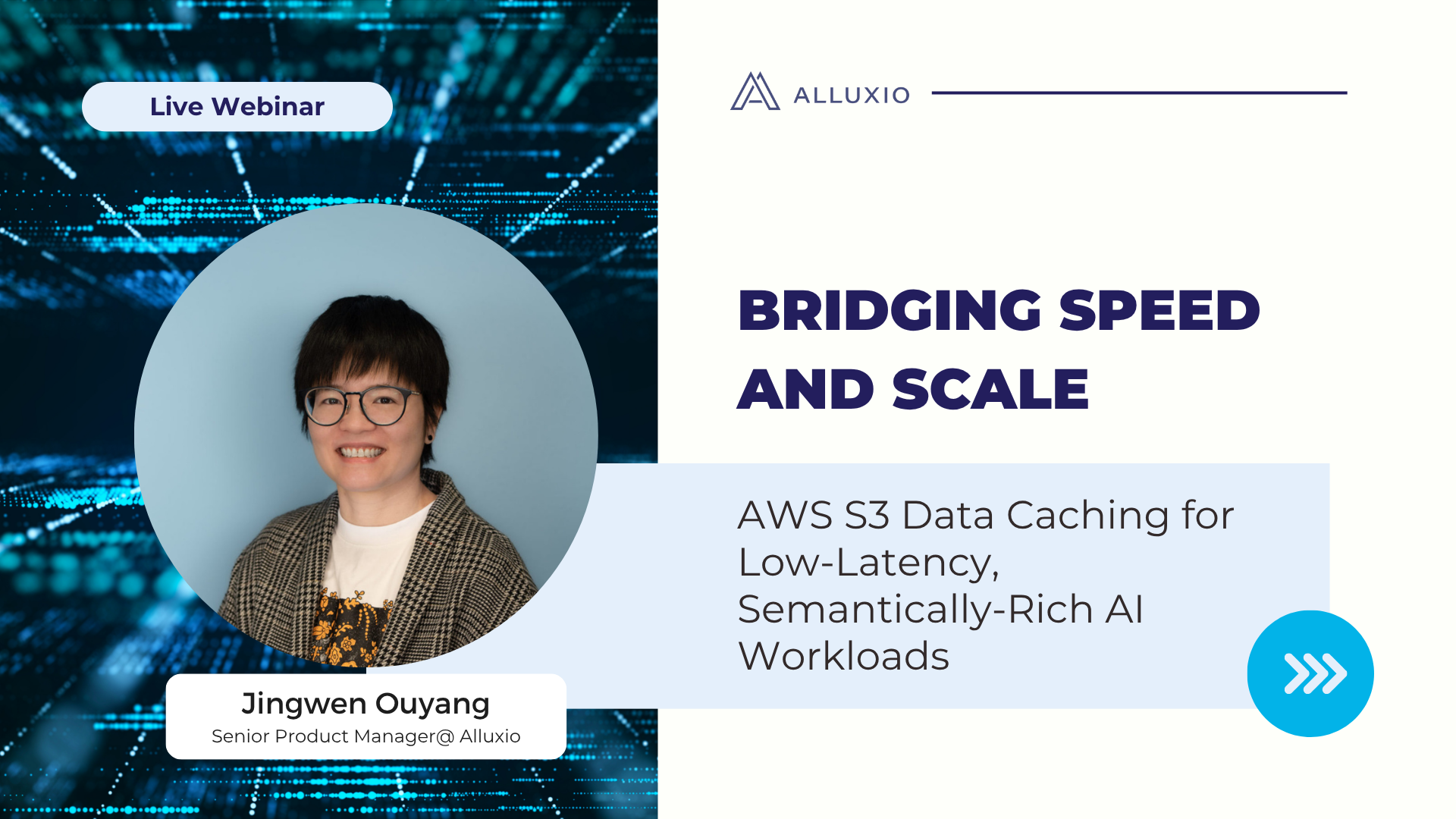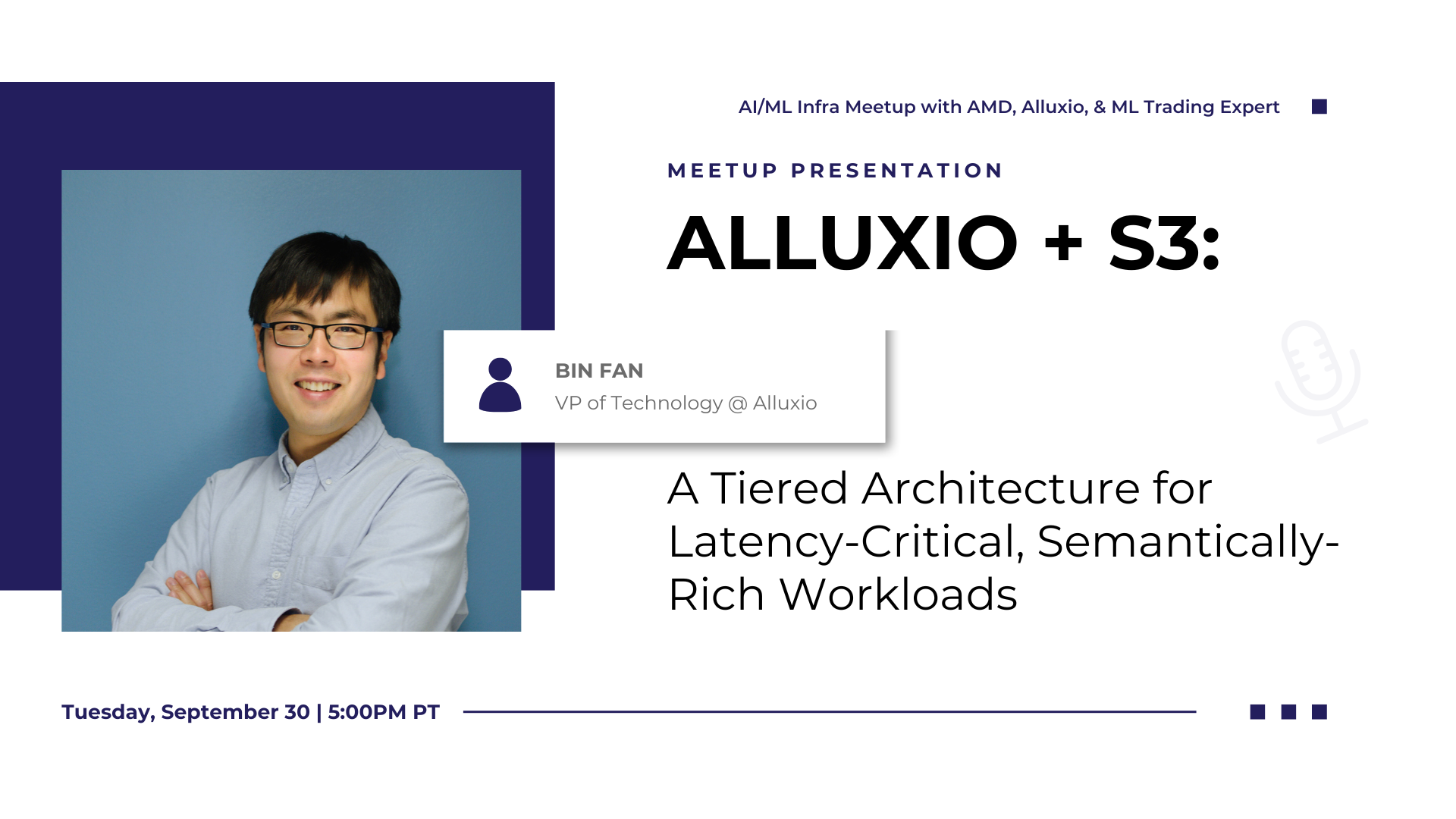Products
Community Office Hour: Improving Data Locality for Spark Jobs on Kubernetes Using Alluxio
December 19, 2019
ALLUXIO COMMUNITY OFFICE HOUR
While adoption of the Cloud & Kubernetes has made it exceptionally easy to scale compute, the increasing spread of data across different systems and clouds has created new challenges for data engineers. Effectively accessing data from AWS S3 or on-premises HDFS becomes harder and data locality is also lost – how do you move data to compute workers efficiently, how do you unify data across multiple or remote clouds, and many more. Open source project Alluxio approaches this problem in a new way. It helps elastic compute workloads, such as Apache Spark, realize the true benefits of the cloud while bringing data locality and data accessibility to workloads orchestrated by Kubernetes.
One important performance optimization in Apache Spark is to schedule tasks on nodes with HDFS data nodes locally serving the task input data. However, more users are running Apache Spark natively on Kubernetes where HDFS is not an option. This office hour describes the concept and dataflow with respect to using the stack of Spark/Alluxio in Kubernetes with enhanced data locality even if the storage service is outside or remote.
In this Office Hour we’ll go over:
- Why Spark is able to make a locality-aware schedule when working with Alluxio in K8s environment using the host network
- Why a pod running Alluxio can share data efficiently with a pod running Spark on the same host using domain socket and host path volume
- The roadmap to improve this Spark / Alluxio stack in the context of K8s
ALLUXIO COMMUNITY OFFICE HOUR
While adoption of the Cloud & Kubernetes has made it exceptionally easy to scale compute, the increasing spread of data across different systems and clouds has created new challenges for data engineers. Effectively accessing data from AWS S3 or on-premises HDFS becomes harder and data locality is also lost – how do you move data to compute workers efficiently, how do you unify data across multiple or remote clouds, and many more. Open source project Alluxio approaches this problem in a new way. It helps elastic compute workloads, such as Apache Spark, realize the true benefits of the cloud while bringing data locality and data accessibility to workloads orchestrated by Kubernetes.
One important performance optimization in Apache Spark is to schedule tasks on nodes with HDFS data nodes locally serving the task input data. However, more users are running Apache Spark natively on Kubernetes where HDFS is not an option. This office hour describes the concept and dataflow with respect to using the stack of Spark/Alluxio in Kubernetes with enhanced data locality even if the storage service is outside or remote.
In this Office Hour we’ll go over:
- Why Spark is able to make a locality-aware schedule when working with Alluxio in K8s environment using the host network
- Why a pod running Alluxio can share data efficiently with a pod running Spark on the same host using domain socket and host path volume
- The roadmap to improve this Spark / Alluxio stack in the context of K8s
Videos:
Presentation Slides:
Complete the form below to access the full overview:
.png)
Videos
Bridging Speed and Scale: AWS S3 Data Caching for Low-Latency, Semantically-Rich AI Workloads

Amazon S3 and other cloud object stores have become the de facto storage system for organizations large and small. And it’s no wonder why. Cloud object stores deliver unprecedented flexibility with unlimited capacity that scales on demand and ensures data durability out-of-the-box at unbeatable prices.
Yet as workloads shift toward real-time AI, inference, feature stores, and agentic memory systems, S3’s latency and limited semantics begin to show their limits. In this webinar, you’ll learn how to augment — rather than replace — S3 with a tiered architecture that restores sub-millisecond performance, richer semantics, and high throughput — all while preserving S3’s advantages of low-cost capacity, durability, and operational simplicity.
We’ll walk through:
- The key challenges posed by latency-sensitive, semantically rich workloads (e.g. feature stores, RAG pipelines, write-ahead logs)
- Why “just upgrading storage” isn’t sufficient — the bottlenecks in metadata, object access latency, and write semantics
- How Alluxio transparently layers on top of S3 to provide ultra-low latency caching, append semantics, and zero data migration with both FSx-style POSIX access and S3 API access
- Real-world results: achieving sub-ms TTFB, 90%+ GPU utilization in ML training, 80X faster feature store query response times, and dramatic cost savings from reduced S3 operations
- Trade-offs, deployment patterns, and best practices for integrating this tiered approach in your AI/analytics stack
October 28, 2025
AI/ML Infra Meetup | AI at scale Architecting Scalable, Deployable and Resilient Infrastructure

Pratik Mishra delivered insights on architecting scalable, deployable, and resilient AI infrastructure at scale. His discussion on fault tolerance, checkpoint optimization, and the democratization of AI compute through AMD's open ecosystem resonated strongly with the challenges teams face in production ML deployments.
September 30, 2025
AI/ML Infra Meetup | Alluxio + S3 A Tiered Architecture for Latency-Critical, Semantically-Rich Workloads

In this talk, Bin Fan, VP of Technology at Alluxio, presents on building tiered architectures that bring sub-millisecond latency to S3-based workloads. The comparison showing Alluxio's 45x performance improvement over S3 Standard and 5x over S3 Express One Zone demonstrated the critical role the performance & caching layer plays in modern AI infrastructure.
September 30, 2025
